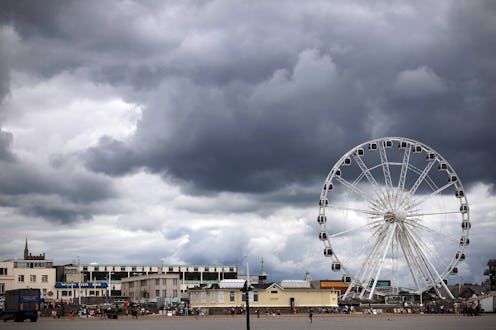News
The UK Just Upped Its Terror Threat To "Severe"
Thanks to the rise of ISIS and the ever-increasing intimidation they've exerted across the West, it's a pretty frightening time. This is especially true for America's allies across the pond — the UK's terror threat level rose in response to ISIS Friday, with British Prime Minister David Cameron proposing new legislation to crack down on British citizens who've joined or are supporting the Islamic militant group. Specifically, one issue Cameron's concerned about is ISIS' Britons re-entering the country with their valid passports, so he wants legislation to allow the UK to revoke them, or withhold citizenship, on suspicion of terrorism.
Here's what's known so far:
- The British government believes 500 or so citizens have departed the country to join ISIS' cause in both Iraq and Syria.
- The UK terror threat level has been raised to "severe," the second-highest designation available.
- The man who executed American journalist James Foley is now suspected to be a Briton named Abdel-Majed Abdel Bary. A former rapper whose tracks got some airtime on BBC's Radio 1, his implication in the grisly crime has sparked fears about the pervasiveness of radicalization.
- The country has had a major terrorist attack before, just as America did back in 2001 — the London Underground/bus bombings of July 7th, 2005 (known by the shorthand 7/7), which killed 52 civilians.
- The UK is home to a Muslim population of greater than 2.5 million. This is not to stoke Islamophobia, or suggest that mainstream, moderate, or liberal forms of the faith particularly culpable in any of this. But the core of ISIS' mission is a faith-based call to erect —violently, if need be — a new Islamic caliphate. And as such, larger Muslim populations are likely attractive targets for ISIS to try to radicalize.
That said, there are a few essential caveats in all this. The UK's terror threat level, which has been in action since the start of August 2006, has actually hit the "severe" level a number of times before.
On six different occasions, British authorities have issued a "severe" threat level warning (one specifically for terrorism related to the conflict in Northern Ireland) and while some incidents have occurred — a series of letter bombs in 2007 and a suicide bombing at the Glasgow International Airport, for example — none have been as severe or as deadly as the 7/7 attacks were. The visibility of Islamic extremism in Britain has been elevated in recent months and years, as well, perhaps most graphically demonstrated by the murder of British army soldier Lee Rigby in Woolwich in May 2013.
In short, the threat level reaching "severe" is itself no guarantee that something catastrophically awful is going to happen — thanks to the desire of governments not to seem unprepared or caught off-guard, these threat levels tend to stay pretty high once implemented.
The U.S. version, for example, that famed rainbow-colored terror threat column (which was retired by the Obama administration in 2011), was never once reduced to any level below "elevated" risk of terrorist attack. The bottom two levels, "guarded" and "low," were never once used in the system's history.
Though tensions are high, Cameron was careful — just as President Obama was when speaking about the James Foley execution — not to lump in the whole of Islam with the violent mission statement of ISIS.
What we are facing in Iraq now with ISIL is a greater and deeper threat to our security than we have known before. ... The root cause of this threat to our security is quite clear. It is a poisonous ideology of Islamic extremism that is condemned by all faiths.
Images: KurdeAvrupa/YouTube; Getty Images
